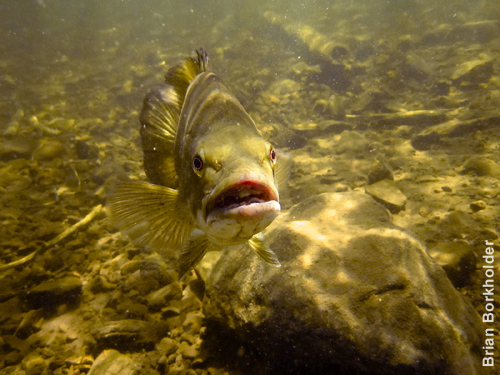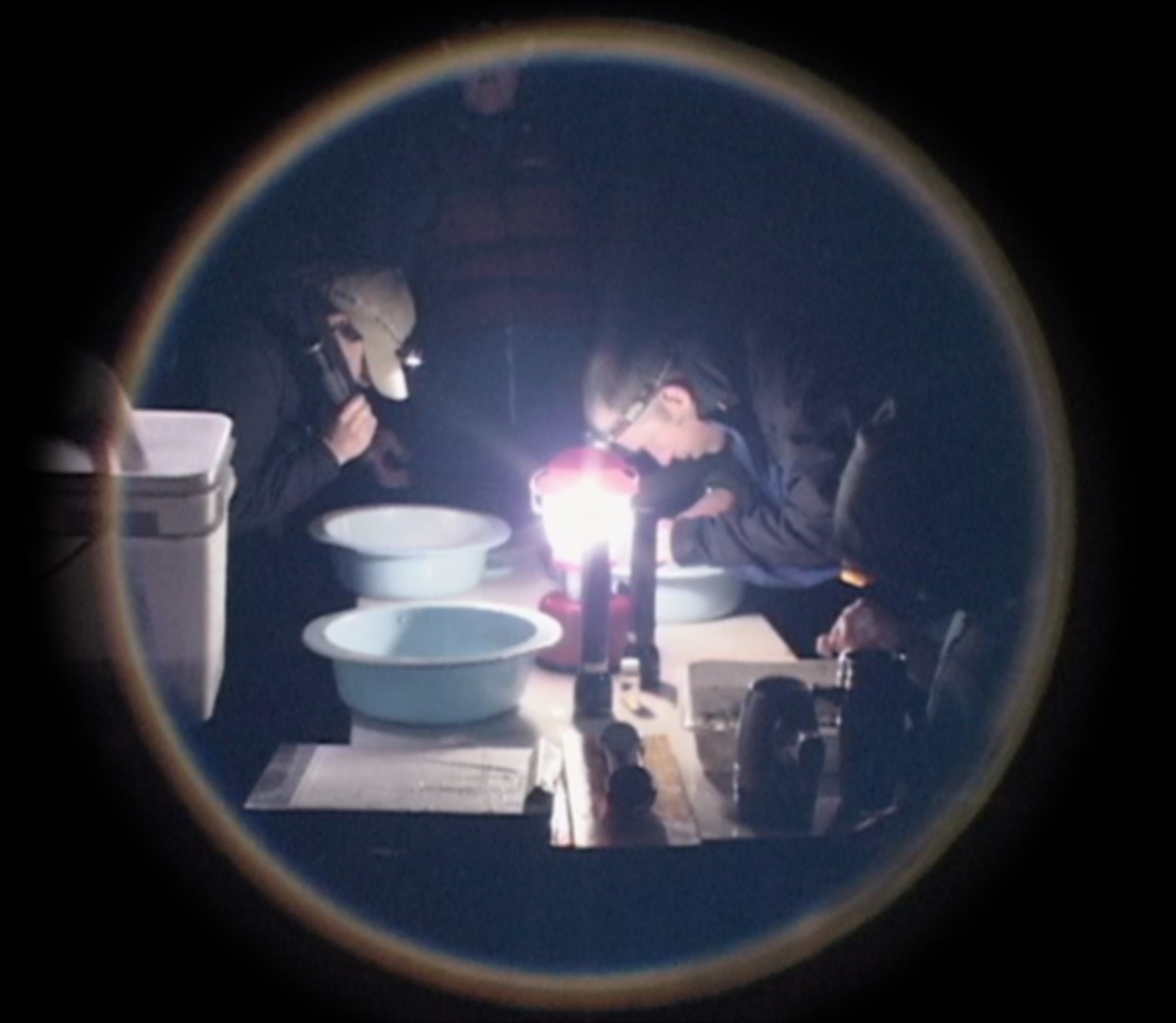
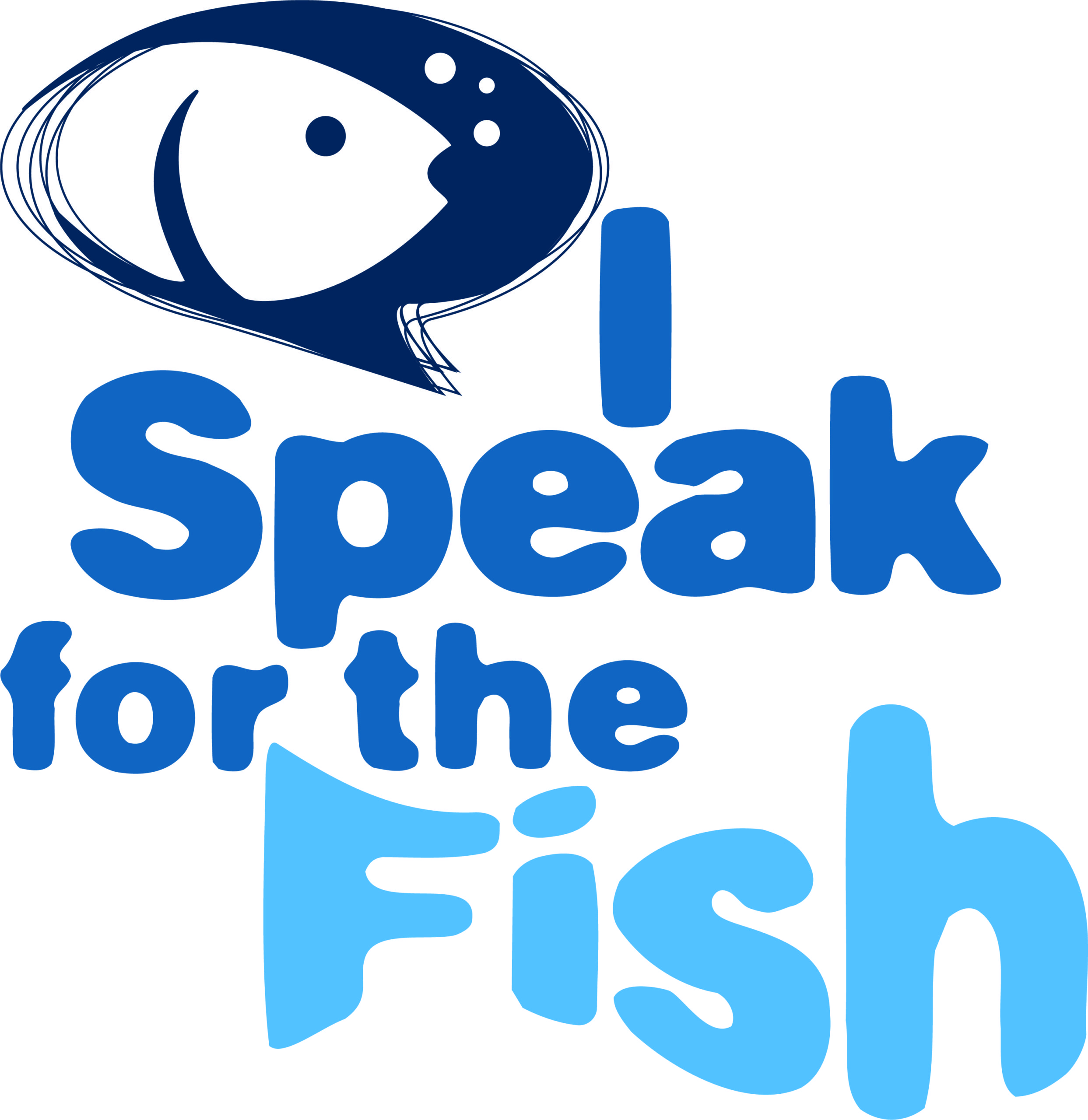 I Speak for the Fish is a monthly column written by Great Lakes Now Contributor Kathy Johnson, coming out the third Monday of each month. Publishing the author’s views and assertions does not represent endorsement by Great Lakes Now or Detroit Public Television. Check out her previous columns.
I Speak for the Fish is a monthly column written by Great Lakes Now Contributor Kathy Johnson, coming out the third Monday of each month. Publishing the author’s views and assertions does not represent endorsement by Great Lakes Now or Detroit Public Television. Check out her previous columns.
Over the past 20 years, I’ve enjoyed getting to know more than 30 biologists doing fisheries research.
I’ve interviewed more than a few, conducted surveys and assessments with several, written reports and produced videos with a handful, sat on committees with some, and endured endless meetings with others.
We’ve waded through streams together. Trudged through wetlands. Paddled rivers. Bounced across the lakes in all manner of research vessels. Dove to the bottomlands. And hiked through the forest at midnight to film larval drifts.
We’ve shared coffee, sunscreen, bug spray, theories, concerns, successes and some grand adventures.
From my experience, fisheries biologists as generally good people who are trying to help other species while causing as little harm as possible in the process.
That said, fisheries research isn’t completely harmless, and for me, it isn’t always easy to watch. I’ve seen things that made me cringe, and more than once I’ve had to look away.
From the fish’s perspective getting hooked or netted or tasered and tagged and poked and prodded can’t be an ideal day. And the harsh reality is that occasionally there are casualties.
So, I wouldn’t be much of a fish advocate if I didn’t ask — where’s the line in fisheries research? What is acceptable in the name of science? And who decides what can be done to fish?
Rules of engagement

Research biologist Dave Dortman surveys a small creek in southeast Michigan. (Photo courtesy of Kathy Johnson)
The only thing I knew for sure was that you can’t just go out and start doing research wherever you want, on whatever species you’re interested in studying. I knew that researchers have to jump through a lot of hoops and to find out more about how the system works I reached out to Dr. Marty Holtgren.
Holtgren is one of Michigan’s leading lake sturgeon researchers. He has worked on projects with universities, tribal communities and state and federal agencies. When it comes to Great Lakes fisheries research, there are very few hoops he hasn’t jumped through.
He said learning to navigate the system typically begins while earning a bachelor’s degree. Universities have very well-established guidelines for all research involving living beings. These can vary by institution, but Holtgren said most universities tend to be very conservative with a focus on limiting impacts.
Institutional animal care and use committees like the one at the University of Minnesota review all projects involving animals to ensure that their benefits justify them and that the methods employed minimize any animal pain or suffering that might occur.
In addition to academic standards, there are professional guidelines for fisheries research.
The American Fisheries Society, the American Institute of Fishery Research Biologists and the American Society of Ichthyologists and Herpetologists have established guidelines for ethical fisheries research.
The 104-page document begins by noting that these professional societies are “focused on the scientific understanding and the global protection, conservation, and sustainability of aquatic animals, fishery resources, and aquatic ecosystems… and the conservation of the diversity and abundance of fish populations.”
The group also addressed the use of fish in fieldwork but stopped short of setting any specific guidelines. With more than 20,000 known species of fish, they found “no concise or specific compendium of approved methods for field research is practical or desirable.” And they suggested, “the ultimate responsibility for the ethical and scientific validity of an investigation and the methods employed must rest with the investigator.”
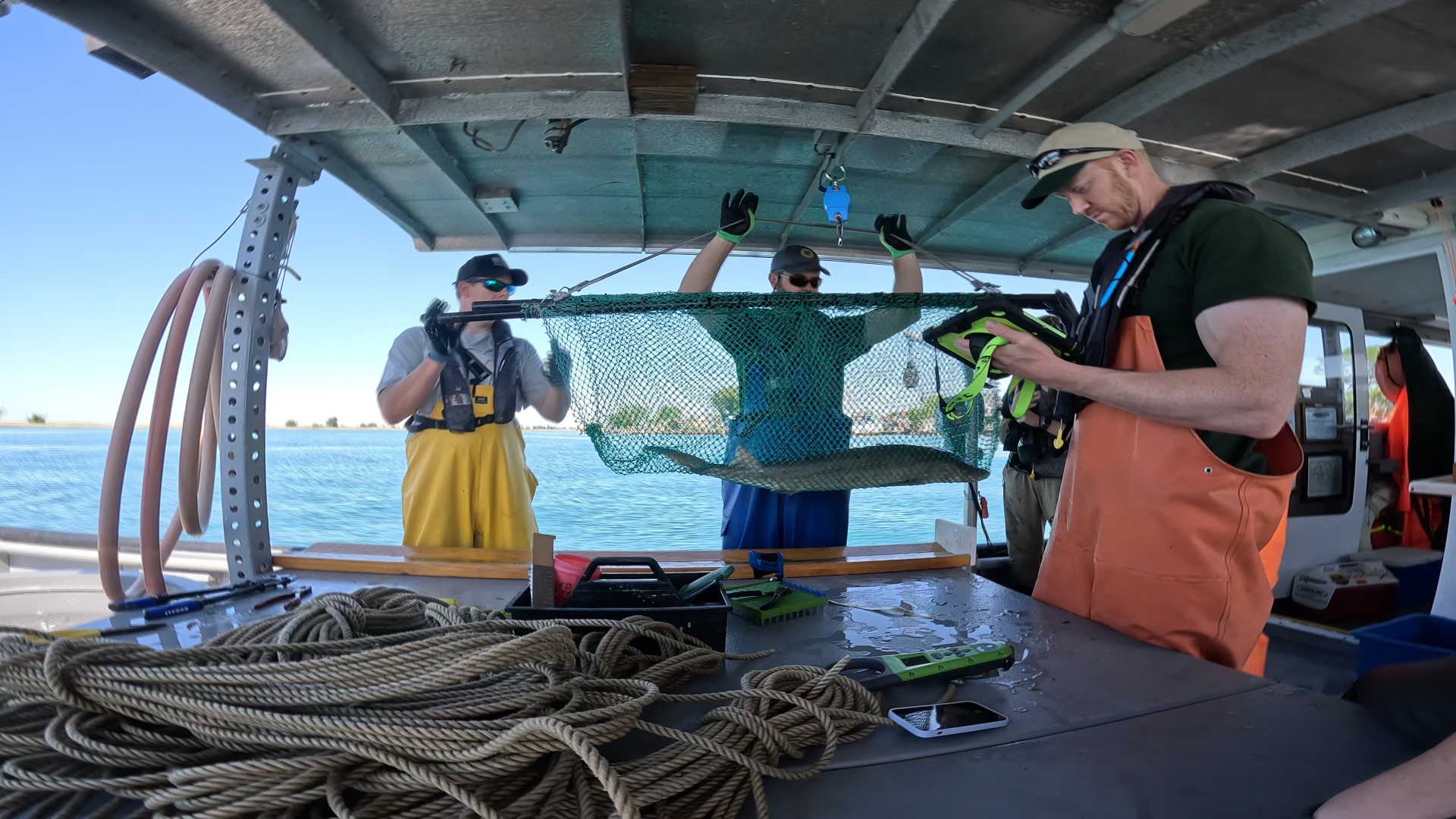
Andrew Briggs and a team of researchers with the Michigan Department of Natural Resources weigh an adult lake sturgeon. (Photo courtesy of Kathy Johnson)
Holtgren agreed that researchers have an ethical responsibility, but he said most of the time it is the state that ultimately determines what methods are employed.
All fisheries fieldwork requires a permit. Sometimes more than one.
Researchers lay out everything they plan to do in their permit applications. Typically, it is the state or provincial Department of Natural Resources (DNR) with oversight of the project area that determines what does or does not get done.
In addition to providing oversight of methodology, the permit process strives to reduce redundancy of effort and limit impacts on individual fish populations.
For example, say you want to study lake sturgeon. The St. Clair River has the largest population of spawning lake sturgeon in the Great Lakes, and you would like to use those fish to conduct your research. So, you fill out a threatened and endangered collection permit with the Michigan DNR’s Wildlife Division.
As part of the review process, the DNR will look at all the permits that have already been issued to see what work is currently being done in the St. Clair River. If there are already multiple lake sturgeon research projects ongoing, the state might deny your permit.
If a species is on the federally endangered or threatened species list then the project will have to go through an additional federal permitting process. This will be similar to each state’s review where the knowledge gained is measured against the anticipated impacts.
Ontario Ministry of Natural Resources (MNR) is the provincial oversight agency for Great Lakes fisheries research. Much like the state DNRs, the MNR primarily determines who gets to do what with fish in Canadian waters.
Fishes and Oceans Canada is the federal agency above the Ontario MNR.
Research conducted by, or with, Native American communities often include additional rules for engagement. These rules vary by Tribal community, however, most evaluate their efforts through a cultural lens.
This cultural lens influences their decision-making regarding acceptable research methods.
Balancing act
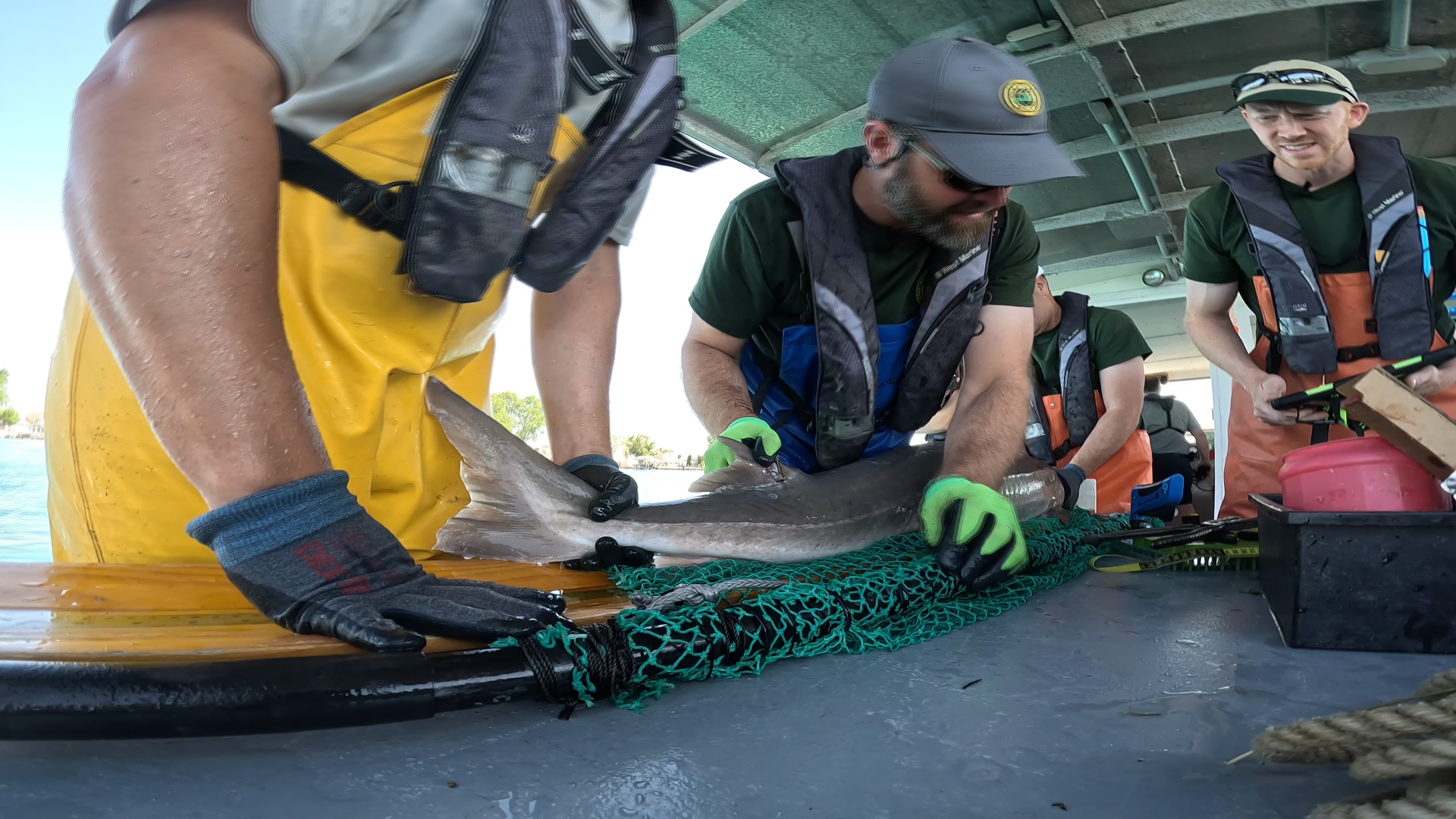
Brad Holmes and Andrew Briggs tag an adult lake sturgeon as part of a Michigan DNR population study. (Photo courtesy of Kathy Johnson)
Acquiring as many specimens as possible used to be the fieldwork standard but Holtgren said that approach has changed. Today’s researchers generally take the least number necessary to achieve their project goals.
I’ve seen this play out.
When the Michigan DNR is collecting muskie, they could catch a lot more and make it a lot easier on themselves if they dialed up their electroshock system and zapped the crap out of the fish. But that’s not what they do.
They run the electrical current at the level required to stun a small muskie. This means some of the larger ones get away and that’s ok with the researchers. They would rather let a few big ones get away than risk injury to the smaller ones.
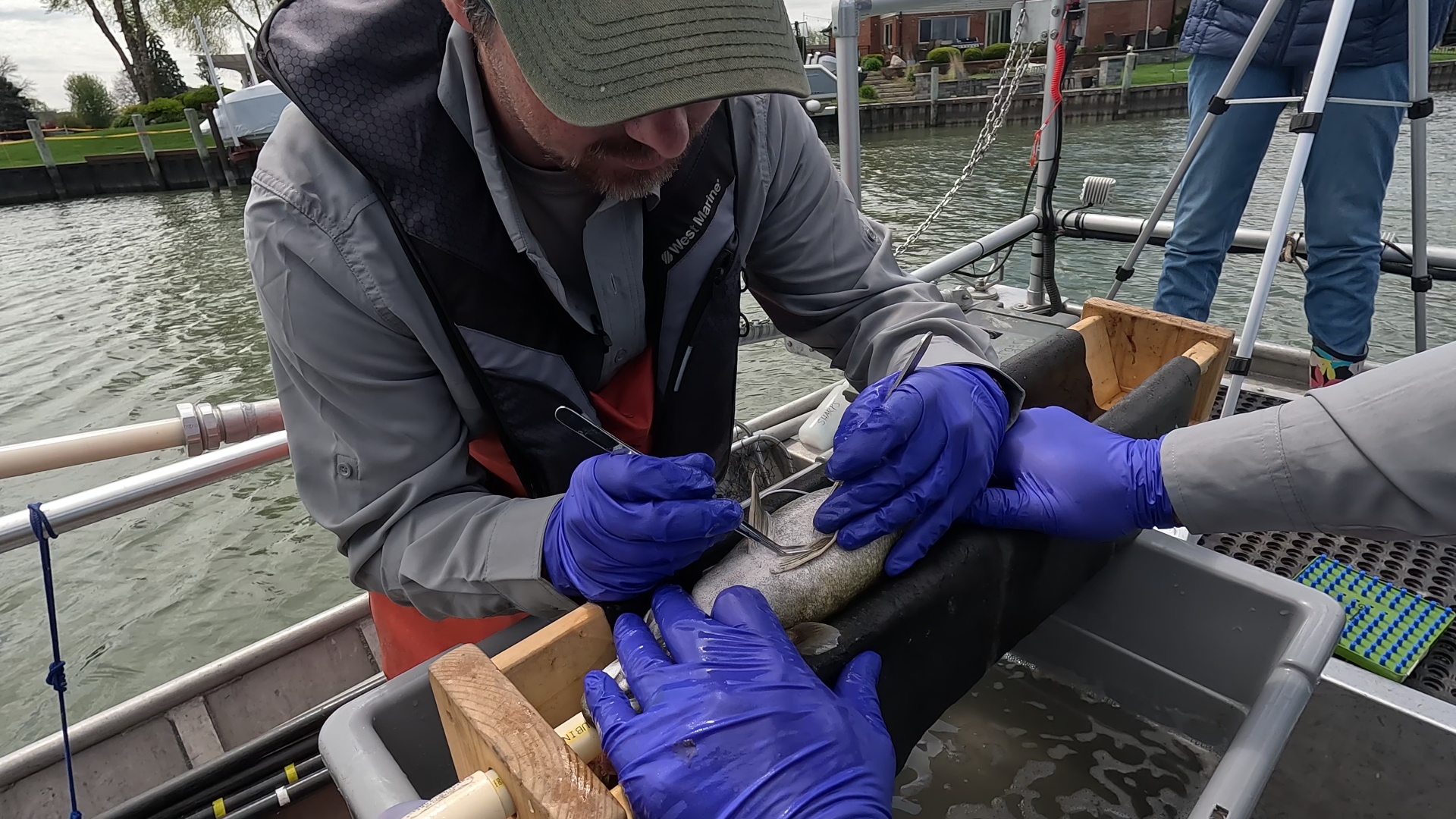
Jan-Michael Hessenauer surgically implants a tracking tag in a smallmouth bass. (Photo courtesy of Kathy Johnson)
When I see researchers in the field adjusting their methods or adopting new approaches to reduce their impact, I appreciate and respect that.
On occasion, when researchers do need to kill fish, Holtgren said the review process is even tougher.
If one fish is sacrificed to learn how to save ten thousand some might say that’s an acceptable 1-10,000 ratio. But it’s a slippery slide down to 1:1 where most would find killing one to save one unacceptable.
Provincial, state, and federal agencies determine at what point the ratio stops working. As with all research, it comes down to this; will the knowledge gained offset the loss?
The broader question of whether animal research should be conducted at all is a bog I do not have the time or wherewithal to explore right now.
While I have seen some things done in the name of science that blew past my acceptable ethical line, I trust that they were done for the greater good. And truthfully, without all the hoop-jumping fisheries researchers out there, we wouldn’t know a tenth of what we know about fish!
Catch more news at Great Lakes Now:
I Speak for the Fish: A Sturgeon goes to Wisconsin and a Michigan muskie visits New York
I Speak for the Fish: Hand-feeding a rainbow trout is fun, but is it ethical?
Featured image: Marty Holtgren searches for larval sturgeon as part of the Little River Band of Ottawa Indians lake sturgeon restoration program. (Photo courtesy of Kathy Johnson)




